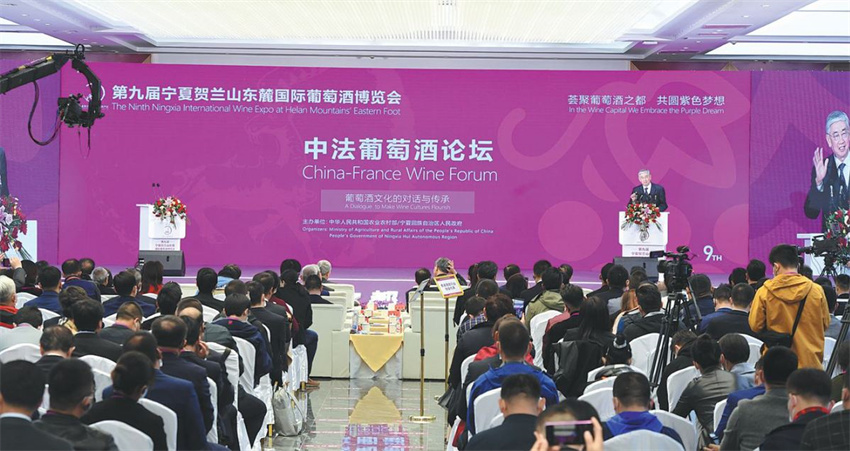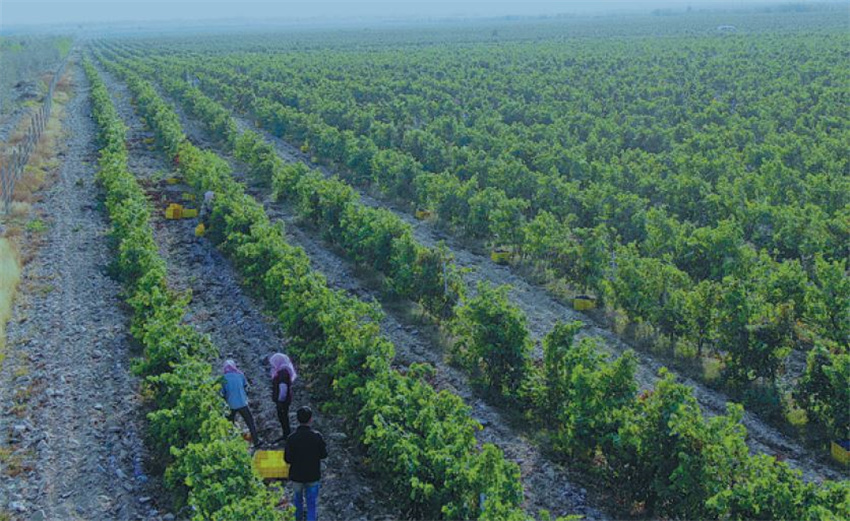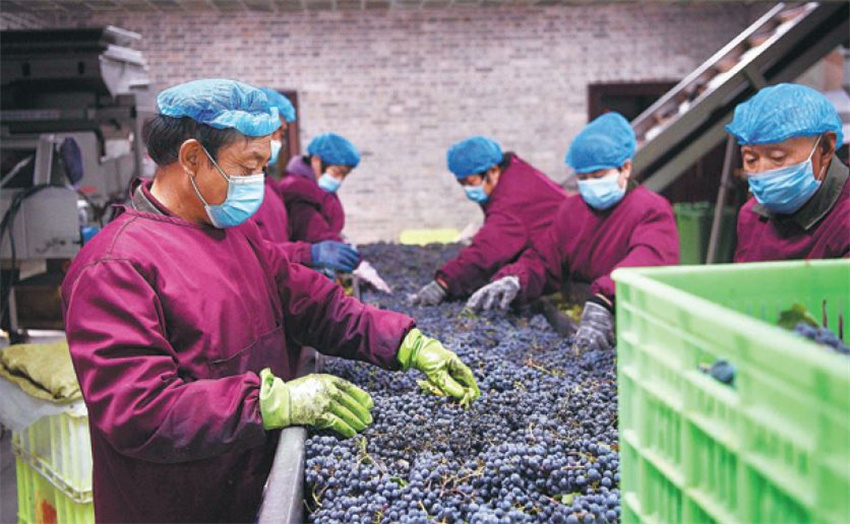
Representatives attend the China-France Wine Forum during the annual international wine expo in Ningxia. [Photo provided to China Daily]
Local brands winning international accolades
The east foothill of Helan Mountains in Yinchuan, Northwest China's Ningxia Hui autonomous region is gaining wider recognition and attention from the global community for its premier wine production.
In the latest wine competition in Ningxia during its annual international wine expo from Oct 22 to 23, five out of the six wines that won the top medals come from wineries in the east foothill of Helan Mountains wine region.
The results were made by 15 international judges for the Concours Mondial de Bruxelles, one of the world's top three wine contests, who tasted nearly 400 samples from 116 domestic wineries in Beijing.
In the latest CMB competition that was held in the Czech Republic in September, wines from the east foothill of Helan Mountains won 48 awards, including four grand gold medals and 26 gold medals, ranking first among the teams of China. It also received the award of "Best Wine of China".
The organizing committee of CMB announced the next competition in Ningxia in May 2021, highlighting the importance of the emerging wine region.
According to statistics from the local wine authority, at least 700 wines from more than 50 wineries in the wine region of Ningxia have won top prizes in international competitions, including CMB, Decanter World Awards and Berliner Wein Trophy, over the past five years.
"The wine region in Ningxia has received bigger fame in the global community, demonstrated stronger impact to boost the local economy and rising competitive strength in the market," said Chen Run'er, Party secretary of the autonomous region.
"Wine has been serving as an outstanding calling card of Ningxia, with which Ningxia started to communicate with the world and invite the world to better know us," Chen said.
After nearly 40 years of development, especially the joint efforts between the government and entrepreneurs who have been heavily invested in wineries over the past 15 years, the wine region has become the largest wine grape plantation area in China, producing one fourth of the country's total wine grapes.
According to the government plan, the total scale of wine grape bases in the region will reach 66,700 hectares by 2025, doubling the current area.
Correspondingly, the annual output will be increased from 130 million bottles of high-quality wine to at least 300 million in five years, generating an industrial yield of 100 billion yuan($14.95million).

Ningxia's wine region has become the largest wine grape plantation area in China, producing one-fourth of the country's total wine grapes. [Photo provided to China Daily]
Tourism boom
The rising reputation of the wine region started to attract wine fans to discover the once poverty-stricken place with pebbly sand soils that could grow nothing but grapes.
The Gobi desert has been transformed into arable land well suited to the production of wine. Most popular varieties of wine grapes have been planted, such as Cabernet Sauvignon, Cabernet Gernischt and Chardonnay.
According to the research report on online comments about the wine tourism market, which was released during the international wine expo, Ningxia ranks first in the index of online popularity in China.
"Compared with production areas such as Beijing, Shandong and Hebei, Ningxia started much later but developed more rapidly and has higher online attention," said Zhou Lingqiang, dean of the management school of Zhejiang University and chief director of the tourism think tank of the wine region of Ningxia.
"It has the potential to become an online celebrity destination with themed wine characteristics," he noted. "Tourists in Ningxia can have an unforgettable experience from the wine, architecture and shining stars." It took four months to collect nearly 11,500 tourist comments from Diannping.com, an internet company that publishes online views from leisure consumers, and Ctrip.com, a leading online travel agency, to offer wine market development insights and trends in China, Zhou said.
According to the local government, there are 101 wineries established in the wine region along the east foothill of Helan Mountain, of which more than 36 have integrated tourism into their business models.
The wine region of Ningxia was selected as one of the World Top 10 Most Promising Wine Tourism Destinations last Thursday during the international wine expo in Yinchuan.
The other destinations include Chile's Maipo, New Zealand's Wairarapa, Quebec in Canada and Yamanashi in Japan.
"We will promote the integration of wine trade with culture and tourism, encouraging the wineries to diversify their tourism products," said Zhao Shihua, deputy director of the management committee of the wine industrial park at the east foothill of Helan Mountain.
The official figures show that the wineries in Ningxia hosted at least 1 million visitors a year.

Farmers pick up wine grapes in Ningxia. [Photo provided to China Daily]
Wine culture popularized
Zhao Yongqing, secretary-general of the autonomous region's Party committee, said the terrior-driven wine industry in Ningxia will ultimately flourish with culture.
"No matter the grape plantation or vineyard management, the wine art or education from France have deeply affected the lifestyle and sense of appreciation of people around the world," he said. "We have a lot to learn."
The local government plans to jointly set up a wine education institute with the Sino-French Culture and Art Research Center to deepen industrial cooperation between the wine trade of both China and France and promote wine cultural exchanges, he noted.
Christine Cayol, vice president of the center, said through an online meeting system that the institute will not only teach know-how on winemaking but also wine knowledge and etiquette.
"We will invite designers and artists to Ningxia," she said, noting that design and innovation can be found in the industry, including in wine bottle labels and wine bottle shapes.
The institute project is expected to be kicked off in 2021, which Cayol hopes it can attract people who are interested in wine trade around the country.